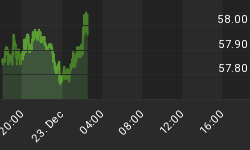The latest Gallup survey finds U.S. Unemployment Increases in Mid-February
The U.S. unemployment rate, as measured by Gallup without seasonal adjustment, is 9.0% in mid-February, up from 8.6% for January. The mid-month reading normally reflects what the U.S. government reports for the entire month, and is up from 8.3% in mid-January.
US Unemployment Rate, Monthly Averages
Gallup also finds 10.0% of U.S. employees in mid-February are working part time but want full-time work, essentially the same as in January. The mid-February reading means the percentage of Americans who can only find part-time work remains close to its high since Gallup began measuring employment status in January 2010.
Percentage of Workers, Working Part Time but Want Full Time Employment
Seasonal forces typically cause unadjusted unemployment rates to increase at this time of year. In this regard, some of the sharp increase Gallup finds in unemployment and underemployment may result from seasonal factors. Although the government seasonally adjusts the U.S. unemployment rate, and the workforce participation rate could decline, it still seems likely that the BLS will report an increase in the seasonally adjusted U.S. unemployment rate for February.
Regardless of what the government reports, Gallup's unemployment and underemployment measures show a sharp deterioration in job market conditions since mid-January.
BLS Numbers Not Realistic
Gallup only polls those 18 and above while the BLS includes 16 and above. Given teenage unemployment, this would (or at least should) artificially lower unemployment numbers for Gallup. Yet, Gallup is higher, way higher when one considers underemployment.
Fundamental and Mathematical Case for Structurally High Unemployment for a Decade
As I have said many times, the BLS numbers are simply not realistic for many reasons. For further discussion please see ...
- Fewer Nonfarm Employees Now Than December 2000; Unemployment Rate: Some Things Still Don't Add Up; Obamanomics?
- Fundamental and Mathematical Case for Structurally High Unemployment for a Decade; Shrinking Job Opportunities and the Jobs Gap; The Real Employment Situation


















